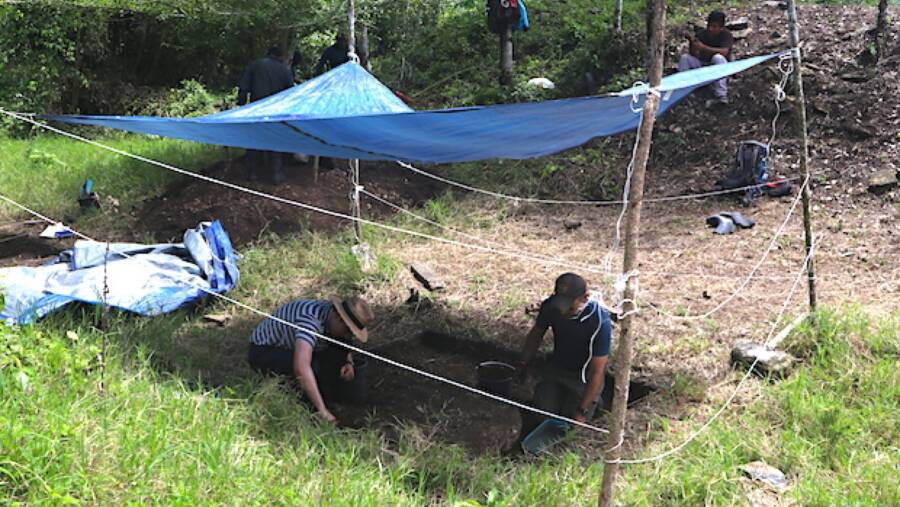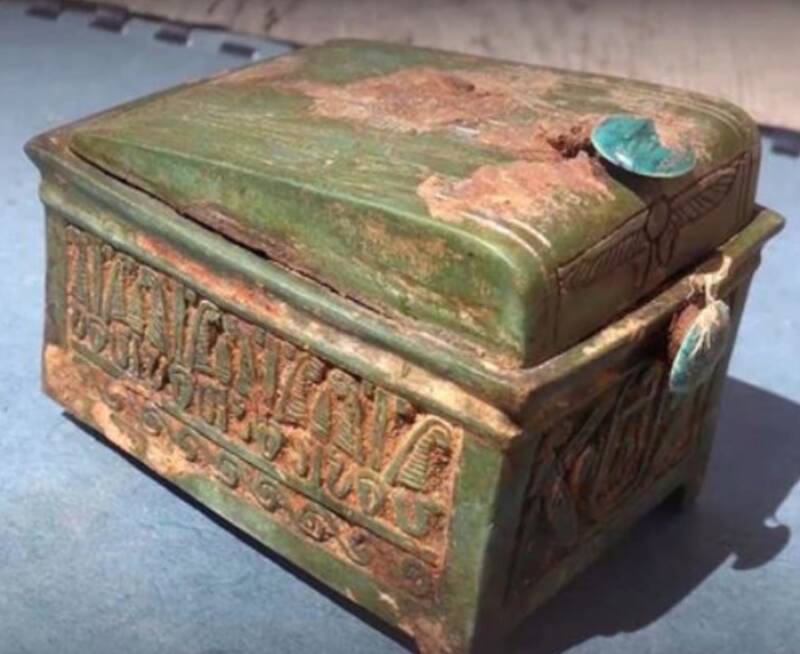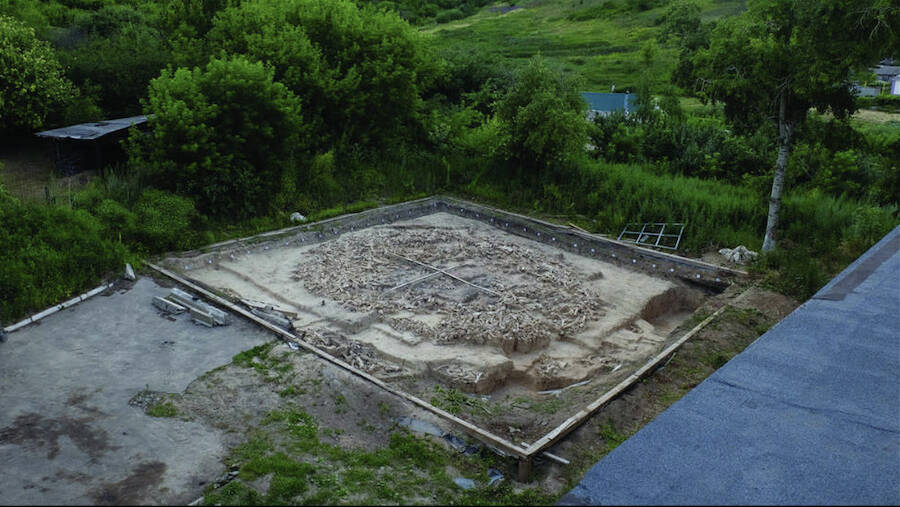Lost Mayan city accidentally unearthed, stone chest of ancient Egyptian pharaoh found, structure made of mammoth bones baffles experts.
Ancient Mayan Capital Discovered By Accident In Cattle Rancher’s Backyard

Charles GoldenArchaeologists dig at the ancient city’s ballcourt.
Researchers had been looking for the ancient Mayan capital of the Sak Tz’I’ kingdom for some 20 years — before finding it in a Mexican cattle rancher’s backyard.
The rancher first uncovered a tablet that eventually tipped researchers off to the entire 3,000-year-old city sitting beneath his land. Complete with a pyramid, homes for the elites, and a city square with a ball court, this long-lost capital is unlike almost anything archaeologists have ever uncovered.
Learn more here.
Discovery Of 3,500-Year-Old Stone Box Could Lead To The Missing Tomb Of Pharaoh Thutmose II

Andrzej Niwiński/Warsaw University’s Institute of ArchaeologyThis wooden box contains the inscription of Pharaoh Thutmose II, which suggests that he was buried nearby.
The tomb of ancient Egyptian Pharaoh Thutmose II has long eluded archaeologists. But a recent discovery may finally help them uncover it.
Archaeologists at the Deir el-Bahari site have found a 3,500-year-old stone chest believed to have ties to Pharaoh Thutmose II. The 15-inch stone chest contained a sacrificial goose, a mummified goose egg, and a wooden box that held what is believed to have been an ibis egg.
Taken together, these items suggest that the lost tomb of the young pharaoh must be nearby.
Dig deeper in this report.
Ice Age Structure Made Of Bones From More Than 60 Mammoths Uncovered In Russia

A. J. E. Pryor et al., 2020/AntiquityThe structure measured 30 feet by 30 feet and was made of 51 mammoth jawbones and 64 mammoth skulls.
Researchers in Russia have excavated an extraordinary relic that is leaving experts baffled. The large structure they found is not only 25,000 years old, but it’s also made from the bones of more than 60 mammoths — and nobody quite knows why.
Researchers discovered comparable but smaller buildings at this same site in the 1960s and 1970s. The excavation site has since been dubbed Kostenki 11, and it sits 310 miles south of Moscow. This latest find is now officially the oldest and largest “mammoth house” ever found there.
Read on here.





